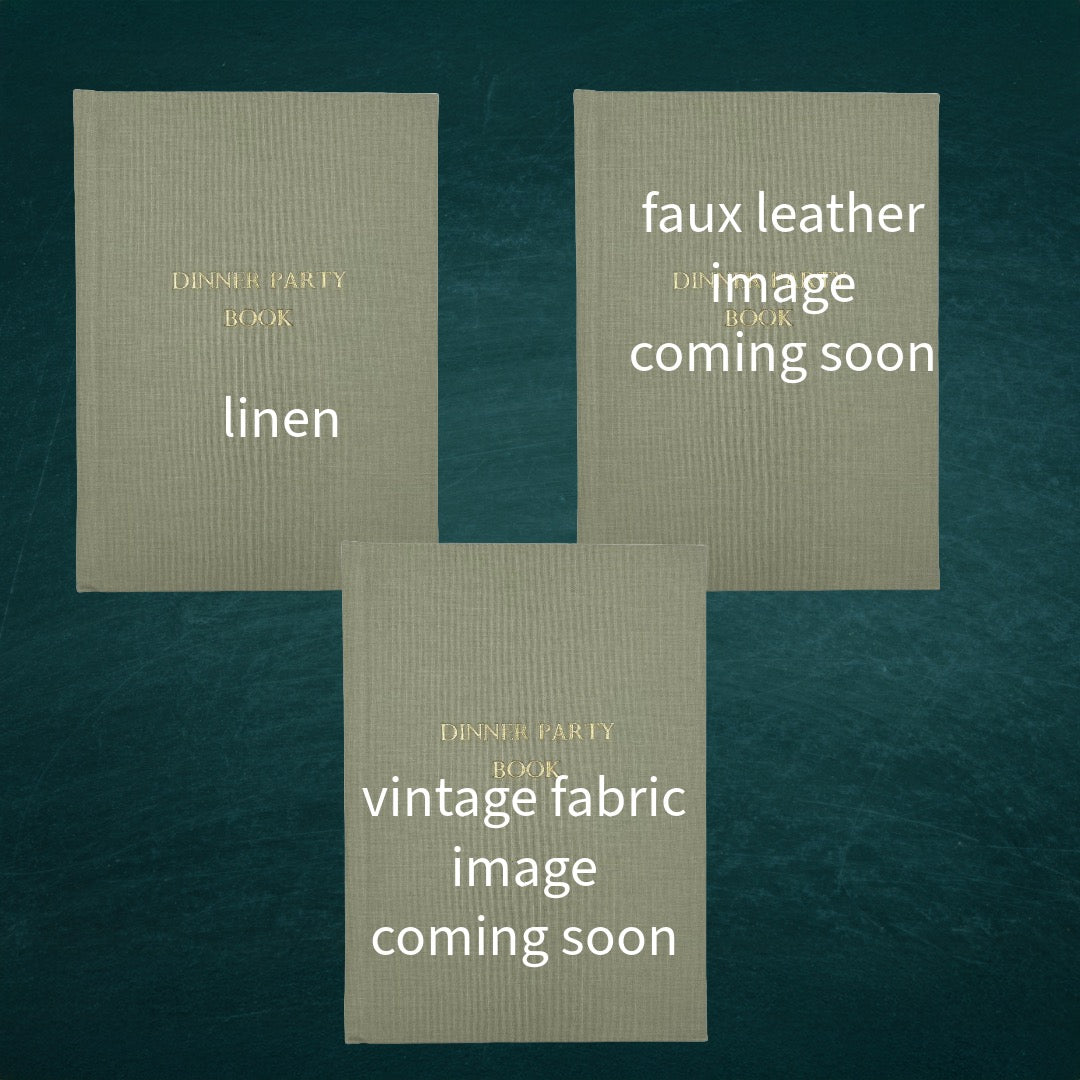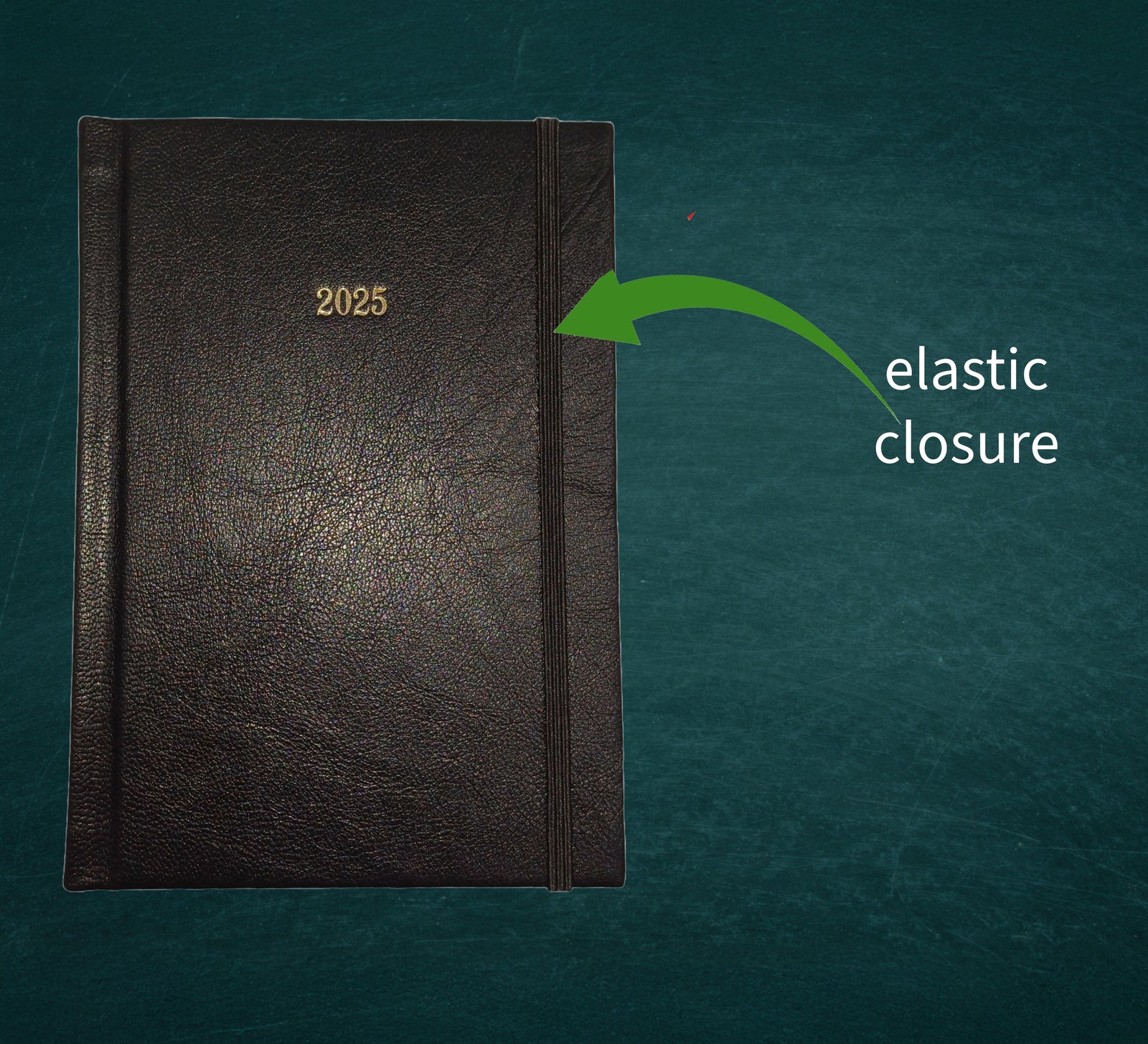Notebooks and Lifestyle Books Customization Options
Endpapers
What are Endpapers? These are folded pieces of paper that mark the outside of the book block and can be plain, toning, contrasting or patterned with a repeat motif, or marbled in fine binding. These sheets are glued up to hold the book block into the case and are integral to the strength of a book.

Gilded Edges
What are Gilded Edges? Gilded edges consist of a thin layer of gold or colour foil is heat sealed to the edge of the pages. This was originally used to protect books against dust. We offer three options - in gold - you can choose one or a combination of two or all edges gilded. If you'd like a different colour please contact us.
Materials
We bind books in hard leather, soft leather, quarter bound and leather alternatives.
Leather
- Hard cover leather nappa: Nappa skins are mainly used for the clothing industry. They are very soft and have a solid colour and no grain. The lamb nappa is glued to rigid boards to create a traditional, hardback book.
- Hard cover leather reclaimed: Using excess off-cuts from Ludlow Bookbinders, these are usually pieces of goatskin that have a grain to them, but are incredibly hard wearing. The goatskin is paired at the edges to make the corners easier to turn in on to the boards. It is then glued to rigid boards to create a traditional, hardback book.


leather alternatives
- Vintage fabric: Where we have been given fabrics, these are lined with thin paper to prevent the glue from bleeding through the cloth. This material is then made into a case, in the manner of a traditional hard backed book.
- Linen: This is paper backed linen-feel cloth, to give a hard back book.
- Faux leather: This is a soft-to-touch polymer that has a vibrant colour and is easy to block. A tactile alternative to leather.
Hard Cover Quarter Bound
- Leather Marble: This style of binding uses leather for the spine and marbled papers for the front and back boards.
- Leather Decorative papers:this style of binding uses leather for the spine and decorative papers for the front and back boards.
- Cloth Marble: This style of binding uses plain cloth for the spine and marbled papers for the front and back boards.
- Cloth Decorative paper: This style of binding uses plain cloth for the spine and decorative papers for the front and back boards.


Soft Cover Leather
- Soft cover leather nappa: Nappa skins are mainly used for the clothing industry. They are very soft and have a solid colour and no grain. This is a wrap-style case, in other words, it does not have any boards and is flexible when handled.
- Soft cover leather reclaimed: Using excess off-cuts from Ludlow Bookbinders, these are usually pieces of goatskin that have a grain to them, but are incredibly hard wearing.
Paper
The majority of the papers that we use are off cuts from larger pieces that have been produced when flat sheets are trimmed, prior to folding, during the creation of a book block at Ludlow Bookbinders. This means that we have a built-in, unique quality to the notebooks, sketchbooks and stationery that we produce. The names of the papers will be familiar to many, with the most regular being – Fabriano, Hahnemuhle, Magnani, Munken, Saunders Waterford, Somerset and Zerkall.


Personalisation
We offer customers the ability to add their own text on up to 4 locations on all stationery, depending on the size of the book and the material used.
Please note that pocket notebooks and soft leather notebooks do not have enough space on the spine for us to offer text on Position 4: the spine.
Pen Holder
This option is only available for hard leather notebooks


Ribbon Marker
A ribbon marker can be added at no extra cost. We offer the following options:
- Ribbon marker matching colour
- Ribbon marker contrasting colour
Ribbon Tie
A ribbon tie can be added at no extra cost. It is only available on the Pocket Notebooks and the A5 plus soft notebooks. We offer the following options:
- Ribbon tie matching colour
- Ribbon tie contrasting colour
- Leather tie matching colour
- Leather tie contrasting colour
- No tie


Elastic Closure
A loop of elastic that holds a book shut or can act as a book marker..
Gilded Leaf
A decorative pattern that we block onto the front cover of any landscape book.
Gild leaf can be applied in gold, silver or a colour of your choice - or no colour, just indented.

Glossary of Bookbinding Terms
This is the name for a book without its cover.
This is a stiff, closely woven fabric with a coating that makes it hard wearing an ideal for bookbinding. It is often used for ledgers that are in frequent use.
A term used to explain gluing a book block into its case.
Fold a sheet of paper in half and then in half again – this creates an eight page section.
These are decorative flourishes, historically used to strengthen
the head (top) and tail (bottom) of a book’s spine. When sewn by hand these form an integral part of the book, but most commercial versions are glued on and provide a finishing touch.
This is a term used to refer to the fact that the spine material of the book’s case has been glued to the spine of the paper of the book itself. This is common in antique books and means that the original material is a) hard and time consuming to remove and b) often results in the original spine disintegrating.
This is casing for a book that is made from board covered in a variety of materials from paper, cloth, leather, vinyl, Buckram.
This is an additional piece or ribbon that is often found in large family Bibles to mark specific passages/reading or for referencing pages in a notebook.
This is when glue is applied to the spine of the of a book – the pages are often single sheets that have been sanded off to make a smooth surface on which to apply the glue. This is a commercial method of creating a book and over time leads to the glue becoming brittle and pages falling out. It is most usually used for paperback books.
Theses are the horizontal ribs down the spine of a book that are usually formed when the book is sewn onto cords. But these can be created artificially by insetting strips of leather in to the spine before the book is cased in, or simply as a ornamental flourish by a pair of double, parallel lines, usually in gold foil.
These are created when flat sheets of paper are folded, most frequently in book binding twice, so that something called an eight page section emerges. i.e. fold a sheet of paper in half and then in half again. If you number the bottom right hand corner of each page and then unfold the sheet, this will give you an idea of how a printer will have to layout a book for printing into eight page folded sections.
This is where the sections of a book are sewn together rather than just glued. Sewn sections allows for a book to lie open more easily without the pages falling out.
This refers to the case of the book when it is made without boards, which creates a book that will bend.
This is a simple ‘over-sewing’ that creates a line of stitches down the left hand margin of a book in Western thesis binding.